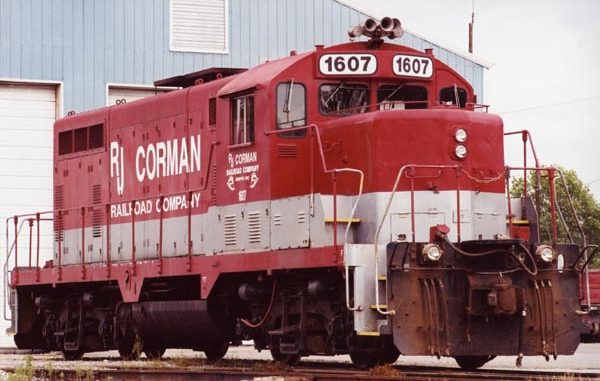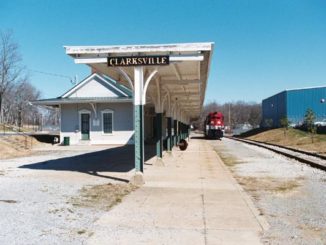
GUTHRIE, Ky. — Driving into this small town, hugging the Kentucky- Tennessee state line, one can feel a sense of history, long forgotten over several decades.
At one point in history, five railroads served the city. Today, one Class I Railroad and one short-line railroad still pass through Guthrie on a daily basis.
Trains first reached Guthrie in the 1850s. And within the next 30 years, Guthrie became a hub for travelers and railroads. Trains left Guthrie, connecting to almost anywhere in the Eastern United States.
The first, and most famous railroad to serve Guthrie, was the Louisville & Nashville Railroad.
Chartered on March 5, 1850, in the Commonwealth of Kentucky and on Dec. 4, 1851, in the State of Tennessee, the Louisville & Nashville Railroad operated until Dec. 31, 1982.
The second railroad reaching Guthrie was the Memphis, Clarksville & Louisville Railroad, which received its charter from Tennessee on Jan. 28, 1852. The line connected with the Memphis & Ohio Railroad and the Louisville & Nashville Railroad in Guthrie to provide connecting service between Memphis and Louisville.
The first train on the Memphis, Clarksville & Louisville Railroad ran on Oct. 1, 1859, according to published notices in The Clarksville Chronicle.
The line operated, excluding the years during the Civil War and an 11-day strike in 1868, until Sept. 30, 1871, when it was purchased by the Louisville & Nashville Railroad.
The third railroad to reach Guthrie was the Edgefield & Kentucky Railroad. The railroad was incorporated Feb. 13, 1852, and completed “in the latter part of 1859,” notes historian Kincaid Herr. The Edgefield & Kentucky Railroad connected Nashville, Tenn., and Guthrie, Ky., and offering connections to regional cities, including Henderson, Ky., and Memphis, Tenn.
“Soon after the close of the civil war, Gen. (Jeremiah) Boyle took hold of the Edgefield, Henderson & Nashville Railroad, which had been dragging along with great difficulty for several years, and with his usual zeal imparted life to the enterprise,” according to “A History of the State (Fourth Edition),” published by Battle, Perrin, & Kniffin in 1887.
“He visited Europe to negotiate with the French stockholders of the road, and so successful was he that he was able to prose- cute the work with great rapidity to its completion. He subsequently devoted himself with great vigor to the inauguration of the narrow-gauge system in Kentucky, and by his presentation of the subject gained the favorable attention of the public.”
The Louisville & Nashville Railroad later purchased the Edgefield, Henderson & Nashville on Dec. 6, 1879.
A fourth road, the Evans- ville, Henderson & Nash- ville Railroad, also served Guthrie. The road, which wasn’t completed until 1871, was taken over on Oct. 1, 1872, by the St. Louis & Southeastern Railway Company. The Louis- ville & Nashville Railroad purchased later the road on Dec. 6, 1879.
A fifth road serving Guthrie never actually operated as an independent entity.
The Elkton & Guthrie Railroad was incorporated on Feb. 10, 1871, as the Elkton Railroad Company.
“Work on the railroad was very slow and 13 years later, only the right of way had been cleared and the roadbed graded,” Dennis Mize wrote in his 1999 book L&N’s Memphis Line.
“To make matters worse, the line was out of money and the prospects of raising additional funds for laying track and purchasing rolling stock were bleak,” Mize wrote. “The problem was solved by turning to L&N’s president, Milton H. Smith, who signed a contract on Aug. 30, 1884 with the Elkton Railroad.”
On May 12, 1957, the Interstate Commerce Commission granted the Elkton & Guthrie Railroad permission to abandon its tracks.
“It is interesting to note that the Elkton & Guthrie never owned any rolling stock and never operated its own railroad,” Mize wrote. “For its entire life, the line was leased to the L&N.”
During the passenger rail- road peak in the 1920s, up- wards of 40 freight trains and 30 passenger trains “were operating through Guthrie and a significant amount freight and passengers changed trains,” Mize notes.
Today, the railroad’s history can be seen in the town’s layout, but the station and many of the tracks leading to town can only be found in the history books.



